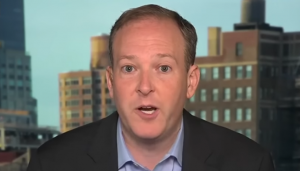Indian equity indexes on Wednesday gained for the third day in a row, boosted by advances in Finance, Realty, and Banking stocks, as oil prices eased after Russia hinted at de-escalation of the war with Ukraine.
Markets opened sharply higher and stayed steady throughout the day, as investors were encouraged by Finance Minister Nirmala Sitharaman’s remark that India’s fast economic rebound following COVID-19 and Budget policies will help sustain growth momentum in the years ahead.
Also Read| IPL 2022: Boosted by Moeen Ali, Chennai Super Kings take on Lucknow Super Giants
The Nifty50 has formed yet another small positive candle on the daily chart with a gap-up opening, suggesting the continuation of upside momentum, according to Nagaraj Shetti, Technical Research Analyst at HDFC Securities.
He sees a buy-on-intraday-dips opportunity in the market now. “Immediate resistance at 17,490 of the previous lower top has been surpassed marginally. This is a positive indication,” he said.
Also Read| Goa CM Pramod Sawant allocates funds for free LPG cylinders
Sensex rose 740.34 points or 1.28% to 58,683.99 and Nifty was up by 172.95 points or 1.00% to 17,498.25 in the previous session. Sensex touched a high and low of 58,727.78 and 58,176.00, respectively. There were 21 stocks advancing against 9 stocks declining on the index. Nifty traded in a range of 17,522.50 and 17,387.20. There were 32 stocks advancing against 18 stocks declining on the index.
Broader Indices
The broader indices ended in green with the BSE Midcap index rising 0.78%, while the Small cap index was up by 1.09%. The top gaining sectoral indices on the BSE were Finance up by 1.71%, Realty up by 1.49%, Bankex up by 1.36%, Industrials up by 1.25% and Auto up by 1.20%, while Metal down by 2.89%, Oil & Gas down by 0.86%, Basic Materials down by 0.59%, Power-down by 0.40% and Utilities down by 0.37% were the top losing indices on BSE.
Also Read| UK, Indian foreign ministers to meet today to discuss Russia-Ukraine war
Support and Resistance levels
The key support level for the Nifty is placed at 17,416, followed by 17,334. If the index moves up, the key resistance levels to watch out for are 17,551 and 17,605, according to pivot charts.
SGX Nifty
The trends on SGX Nifty indicate a positive opening for the index in India with a 68-points gain. The Nifty futures were trading at 17,596.20 on the Singaporean Exchange around 06:45 hours IST.
Asian Markets
Asian markets finished mixed on Wednesday. The Shanghai Composite gained 1.62% and the Hang Seng rose 1.34%. The Nikkei 225 lost 0.80%.
Also Read| Chris Rock holds first show since getting slapped by Will Smith at Oscars
The S&P 500 fell 29.15 points, or 0.6%, to 4,602.45.
The Dow Jones Industrial Average fell 65.38 points, or 0.2%, to 35,228.81.
The Nasdaq fell 177.36 points, or 1.2%, to 14,442.27.
The Russell 2000 index of smaller companies fell 42.03 points, or 2%, to 2,091.07.
European Markets
European markets finished mixed on Wednesday. The CAC 40 gained 2.31% and the FTSE 100 rose 0.55%. The DAX lost 1.45%.
Also Read| ‘Will fight for every metre of land’, says Zelensky amid Russian ‘pullback’
Dearness Allowance hiked by 3% for central government employees, effective from Jan 1, 2022
The Union Cabinet on Wednesday hiked Dearness Allowance (DA) and Dearness Relief (DR) by 3% to 34% to benefit over 1.16 crore central government employees and pensioners. The additional instalment will be effective from January 1, 2022, said an official release after the Cabinet meeting. “This increase is in accordance with the accepted formula, which is based on the recommendations of the 7th Central Pay Commission,” it said. The combined impact on the exchequer on account of both Dearness Allowance and Dearness Relief will be Rs 9,544.50 crore per annum.
Also Read| Explained: Dearness Allowance and its types
Axis bank set to acquire Citibank India’s retail business
Axis Bank is all set to acquire Citigroup’s retail banking business in India. The deal, expected to be valued at $2.5 billion (Rs 18,000 crore), is likely to be announced soon, according to PTI. With the acquisition of Citibank’s India retail business, the balance sheet of Axis Bank will expand and it will get a larger footprint across India. According to RBI data, Axis Bank has an outstanding credit card base of 8.6 million and Citibank has 2.6 million credit cardholders. Earlier this month, Axis Bank stated it hadn’t decided on purchasing Citigroup’s India retail business. Axis Bank, Kotak Mahindra Bank and IndusInd Bank were in the race and had submitted binding bids to acquire Citibank’s consumer banking portfolio.
Also Read| What it means to pay for natural gas using Russian rubles: Explained
Cabinet okays $808 million program to boost the performance of small and medium-sized enterprises
The Union Cabinet has approved a World Bank-assisted programme worth $808 million to improve the performance of micro, small, and medium enterprises (MSME). The programme, called ‘Raising and Accelerating MSME Performance’ – or RAMP – will commence in FY23, the government said in a statement on March 30. Of the $808 million, $500 million will be a loan from the World Bank, while the remaining $308 million will come from the Centre. The $500 million loans from the World Bank’s International Bank for Reconstruction and Development is for 18.5 years, which includes a grace period of 5.5 years. The RAMP programme was approved by the World Bank’s Board of Executive Directors on June 4, 2021.
Also Read| Academy says Will Smith refused to leave Oscars as it mulls disciplinary action
SEBI mandates 30 day period for rebalancing portfolios of mutual fund schemes
Markets regulator Securities Exchange Board of India (SEBI) on Wednesday announced timelines for the rebalancing of portfolios of mutual fund schemes to bring uniformity. SEBI issued a circular that said the rebalancing period would be applicable in the case of deviation from mandated asset allocation mentioned in the Scheme Information Document (SID) due to passive breaches. Generally, passive breaches are not arisen due to omission and commission of Asset Management Companies (AMCs). Rebalancing of all mutual fund schemes, except Index Funds and Exchange Traded Funds (ETFs), must be done within 30 business days. In case, the rebalancing is not done within the required timelines, justification in writing, including details of efforts taken to rebalance the portfolio must be presented to the concerned investment committee. The committee can extend the timelines up to 60 business days from the date of completion of the mandated rebalancing period. SEBI states that AMCs will not be allowed to launch new schemes until the portfolio is rebalanced within the extended timelines.
Also Read| Who was Paul Herman, actor of several Oscar-winning movies dead at 76?
Russia, India to consider SWIFT alternative for ruble payments
The Government of India is considering a proposal from Russia to use a system developed by the Russian central bank for bilateral payments as the former seeks to buy oil and weapons from the sanctions battered country, reported Bloomberg. The plan comprises rupee-ruble denominated payments using Russia’s messaging system SPFS, reported Bloomberg citing sourced. There has been no final decision and the matter is likely to be discussed when Russian Foreign Minister Sergei Lavrov will arrive in India for a two-day visit on Thursday. India is keen to continue bilateral trade as it relies on Russia for weapons and cheaper oil as global prices surge. Oil prices have been highly volatile since Russia invaded Ukraine in February. India’s bilateral trade with Russia averages $9 billion in past few years, mainly comprising defence hardware, fertilizer and some oil. Russia is India’s main supplier of India’s hardware. Given the heavy discounts on Russian crude oil since that attack on Ukraine, India has purchased at least 13 million barrels, compared with around 16 million barrels imported from the country for the whole of last year. According to the proposal, rubles will be deposited into an Indian bank and converted into rupees and the same system will work in reverse, said the report. Whether the exchange rate will be fixed or floating is still up for discussion.
Also Read| Russia, China set eyes on new ‘world order’ free of hegemony
NIPPON INDIA MUTUAL FUND sold 51,02,574 shares of RBL Bank Limited at Rs 129.03 per share on NSE.
LARSEN & TOUBRO LIMITED sold 20,00,000 shares in Virescent Renewable Energy at Rs 95.00 per share on the NSE.
ROHIT KUTHARI sold 12,64,910 shares of Antarctica Graphics Ltd at Rs 1.42 per share on NSE.
NOPEA CAPITAL SERVICES PRIVATE LIMITED bought 97,600 shares in Atal Realtech Limited at Rs 109.00 per share on the NSE.
Also Read| Paul Herman, ‘The Sopranos’ and ‘Goodfellas’ star, dead on 76th birthday
YATHART JALAN bought 69,000 shares in Cool Caps Industries Ltd at Rs 42.75 per share on the NSE.
MONIT EXIM LLP sold 10,40,000 shares in DEEP ENE RESOURCES LTD at Rs 49.33 per share on the NSE.
ENAM FINANCE PVT LTD sold 121,16,368 shares in Future Consumer Ltd at Rs 4.60 per share on the NSE.
Orient Green Power Co Ltd sold 50,00,000 shares of JANATI BIO POWER PRIVATE LIMITED at Rs 12.55 per share on NSE.
SANJAY AGARWAL sold 2,10,000 shares of Khadim India Limited at Rs 223.88 per share on NSE.
Also Read| Severe storms, tornadoes in Deep South of US leave thousands without power
SANTOSH INDUSTRIES LTD sold 9,00,000 shares in Mcleod Russel India Limited at Rs 22.86 per share on the NSE.
LAKSHMI GUTTIKONDA VARA bought 6,48,334 shares in Megasoft Limited at Rs 49.00 per share on the NSE.
SANJAY CHOWDHRI sold 100,00,000 shares in Supreme Engineering Ltd at Rs 2.50 per share on the NSE.
Also Read| Who was Helmut Huber, ‘All My Children’ Star Susan Lucci’s husband dead at 84?
Foreign institutional investors (FIIs) purchased shares worth a net Rs 1,357.47 crore, while domestic institutional investors (DIIs) bought shares worth a net Rs 1,216 crore in the Indian equity market on March 30, as per provisional data available on the NSE.
Also Read| New attendance world record set as Barca thrash Real Madrid in Women’s CL
Vodafone Idea is under the F&O ban for March 31. Securities in the ban period under the F&O segment include companies in which the security has crossed 95% of the market-wide position limit.






